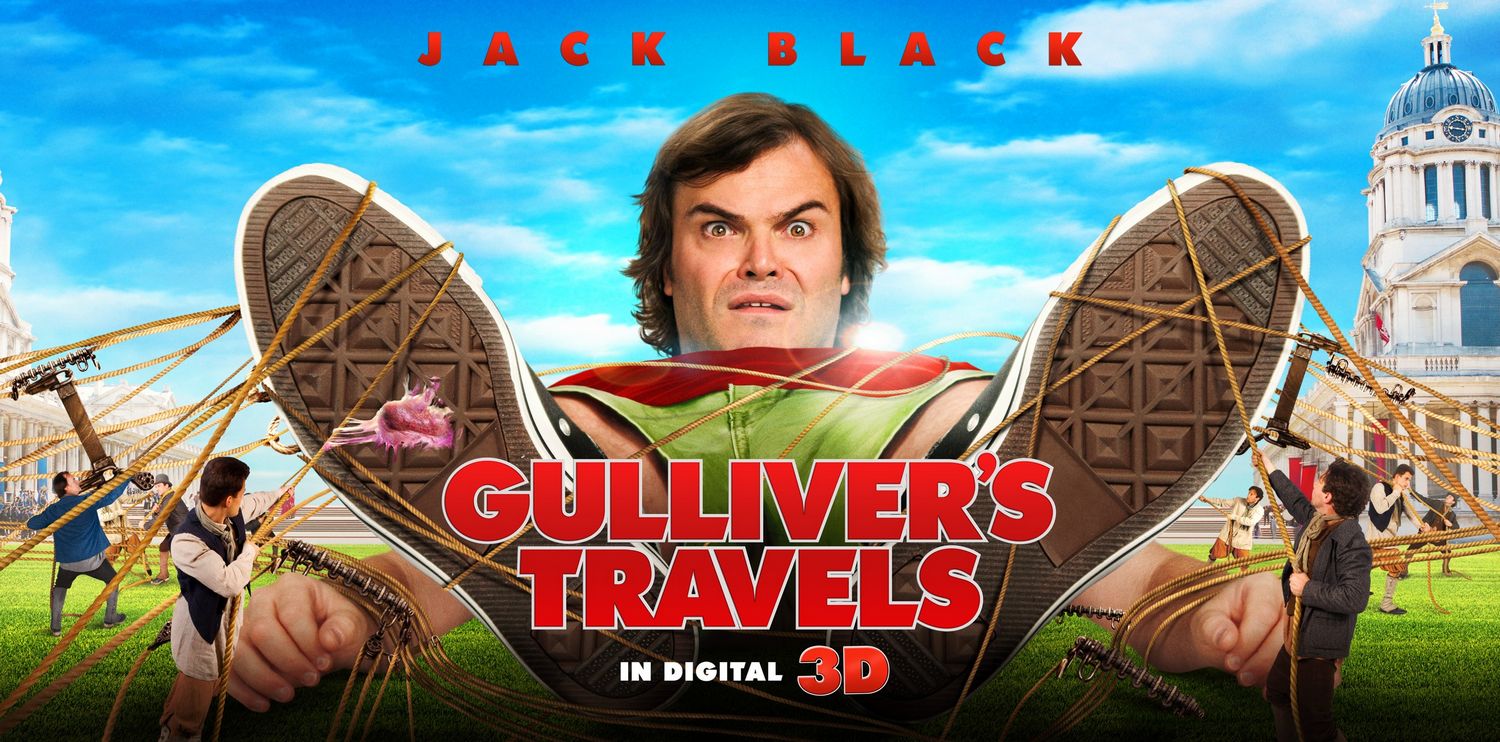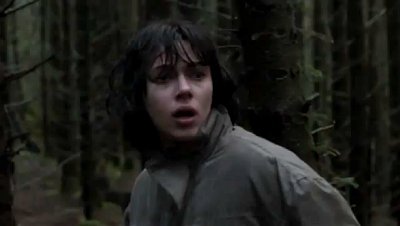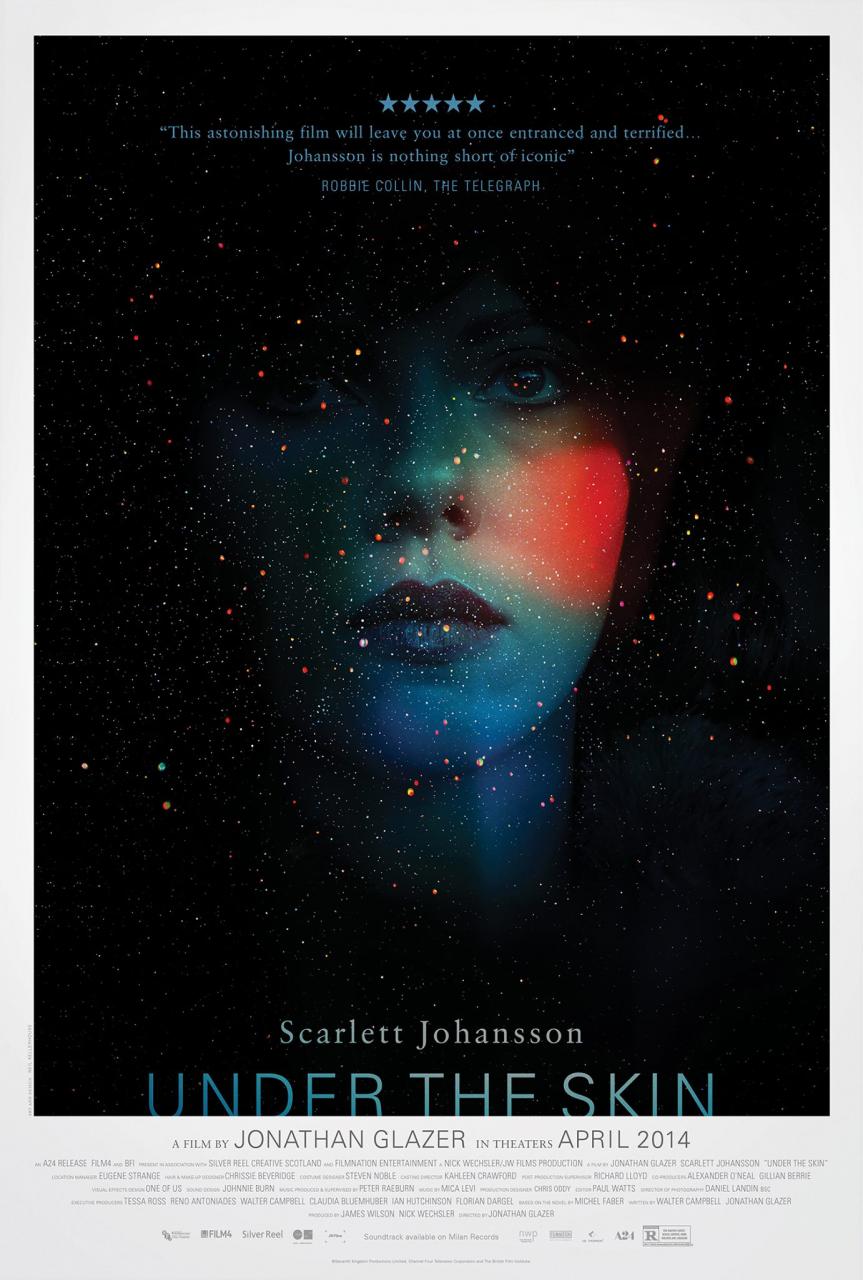The career of Scarlett Johansson sort of baffles me. For one thing, she’s a former child actor who didn’t fade away into obscurity, nor did she go out in a blaze of tabloid infamy. That would be strange enough. But then she made her breakthrough by way of Lost in Translation (which is still widely discussed and regarded as a very good film) and nothing really came of it. Through most of the ’00s, she was still just a pretty face on a magazine cover, and a female lead in such flops as The Island and The Spirit. She was in a few good movies, sure, but I’ve never heard her listed as a key part of what made The Prestige a great work of cinema.
And then Emily Blunt got pulled out of Iron Man 2. Reportedly over scheduling conflicts with Gulliver’s Travels.

Pictured: The film that made Scarlett Johansson’s career.
The Black Widow era gave Johansson the clout to really push herself as an actress and show a wider audience what she can do. The results have been astounding. In only a few short years, she’s proven herself as a wonderfully versatile actress, entirely capable of handling her own as a comedienne, an action star, a dramatist, and a voice actor. Oh, and a gorgeous woman, of course.
So here’s Under the Skin, a movie that features Johansson in nearly every single frame. It comes to us by way of Jonathan Glazer, a commercial/music video director who’s made virtually nothing of note since directing Sexy Beast fourteen years ago. I’m not really sure what I was expecting from such a collaboration, but this certainly wasn’t it.
I’m not really sure how to describe the premise, since there’s so little exposition to go on. Hell, none of the characters in this film are even given any names. But in the novel that this film is loosely based on, the protagonist is named Isserley, so that’s the name we’ll go with. Isserley’s human disguise is played by Scarlett Johansson, but as to what Isserley is? Well, that’s a whole different matter.
The ads and plot synopses would have you believe that Isserley is an alien. And they’re not necessarily wrong. But so little information is given about the character that it could just as easily be an angel, a demon, some trans-dimensional entity, or something else entirely. And remember, the film doesn’t even give this character a name. When we first meet Isserley, we only see a living and naked Scarlett Johansson (we’ll get back to that) trading places with a clothed and dead Scarlett Johansson. And she’s doing this in a bright white room with no visible walls, floors, or ceilings.
We are never given any overt information about what Isserley is doing or why. We only see her interacting with humans, driving around and seducing young men, then taking them someplace dark and private to do… something. I’m not really sure what she does with her would-be lovers, but I’m confident it isn’t good for them.
(Side note: It’s worth noting that the film takes place in Scotland. I assume this is because the premise depends very heavily on strangers who are friendly enough to provide directions and take in hitchhikers with no questions asked. That kind of temperament is much easier to find among Europeans than paranoid Americans. Then again, we are talking about a horny Scarlett Johansson here, so I guess it’s a wash.)

Though the lack of an agenda makes Isserley ill-suited to be the driving force of a story, it benefits her tremendously as an impartial observer. Without a clear goal and without a human upbringing, she walks among us without bias, prejudice, or ulterior motive. The whole movie is about seeing humanity through a completely impartial lens, and it’s fascinating in execution. Of course, the concept of an alien learning about human culture is nothing new (see: E.T., Starman, etc.), but this film takes the detached perspective to a whole new level. Through huge stretches, the film shows us ordinary people going about their ordinary lives with no dialogue, commentary, or intervention from our protagonist. We’re seeing ourselves from Isserley’s completely disconnected viewpoint. What you see in this mirror is of course entirely up to you, but I found the experiment fascinating.
Sometimes, the observations yield some very intriguing concepts in a very subtle way. A key example comes when Isserley witnesses someone on the beach try to save a boy and his father from drowning. This in itself could make for a captivating action sequence if it was shown from the perspective of the characters involved. But instead, we see it through Isserley — we can barely see the other characters, they’re so far away from the camera, and any music in the sequence is minimal. We’re left to witness this act of heroism from an alien viewpoint, calling into question the value of life, self-sacrifice, etc.
Another great example comes when Isserley meets a young man who is horribly, terribly deformed. The man considers himself ugly and of course he has little-to-zero experience in dealing with other people. Never mind beautiful women. But of course, Isserley talks to him without the least regard for his misshapen face. Moreover, this man who longs so desperately for his first real friendship provides a golden opportunity for Isserley to learn about love and social connections (both prominent themes of the film).

But then a weird thing happens. After the first hour, slowly but surely, Isserley’s unnatural charm and unshakeably calm demeanor give way to constant fear and confusion. She’s afraid of pain, she’s afraid of illness, she’s afraid of loneliness, she’s afraid of growing old and ugly, and so on. These fears might seem trivial to us, but that’s only because we’ve lived with them for long enough that we know how to cope. To Isserley, they come all at once, and they’re terrifying.
It makes for an interesting contrast. She goes from welcoming sexual encounters to fighting off molesters. The same alien who effortlessly shrugged off a team of would-be robbers is running for her life. It’s a curious transition to watch, as Isserley learns so much about humanity that she starts to act surprisingly human herself. Needless to say, this hinges entirely on a fantastic performance from Johansson. Just as Her proved that she can deliver such a nuanced character with only her voice, this movie proves that Johansson can craft an endlessly intriguing character with nothing more than body language and raw emotion (or lack thereof). It’s a very physical performance, which brings me to the elephant in the room.
I swear that I try really, really hard not to let nudity or sex scenes sway my interest in a movie one way or another. That said, Johansson has for many years been regarded as one of the hottest women currently alive. She’s an international sex symbol despite (or perhaps because of) her steadfast refusal to show any substantial nudity on film. She’s done a lot of racy photo shoots, to say nothing of all the tight leather she wears for Marvel, but she’s never gone full topless, much less nude. So when the news broke that this would be the first picture to show Scarlett Johansson completely naked from head to toe, every red-blooded straight male out there paid attention.
Well, I can confirm that Johansson does spend a significant amount of screentime either naked or close to it. Given the sexual nature of the character and the story, that’s hardly a shock. But if there’s anyone out there who only came to see this movie for naked ScarJo, joke’s on them. For one thing, Johansson’s male counterparts spend a lot more time naked than she does. For another thing, the visuals have a predilection toward deep shadows and distant camera placements. This means that if you want a good look at the starlet naked, you’ll really have to work for it.
This brings me to the film’s other highlight: The visuals. On the one hand, they’re astounding. I’ve heard this film compared to the works of Kubrick, and I completely understand where the comparison is coming from. Much like 2001: A Space Odyssey or The Shining, this film is stuffed to the gills with trippy and dreamlike imagery, so opaque and yet so full of potential symbolism that they simply beg to be dissected and discussed. Of course, this can also work against the movie: all too often, I was faced with scenes so indescribably weird that some of them could only make sense in context after I read the Wikipedia synopsis for the source novel. And there are others (like the very first sequence, for example) that I’m still scratching my head over.

Guess what this is. Go ahead. Try it.
The editing is the far bigger problem. Nine out of every ten shots are held for way, way longer than they should have been. This feels deliberate, like the filmmakers were trying to build up suspense, and I can respect that. It was the right way to go, don’t get me wrong, they just went overboard with it. There’s taking it slow and steady, and then there’s padding out the runtime. It’s way too much of a good thing, especially since this is a 108-minute film. They could easily have cut 18 minutes without losing anything, and it still would have qualified as feature length. Easy.
The mishandled pacing and mercilessly opaque story might have been enough to sink any trace of suspense this film might have had. Luckily, Johansson is there to keep things afloat. The score was provided by a bizarre UK performer named Mica “Micachu” Levi, and the music she turned in is masterfully haunting. I can only describe it as controlled chaos: The mess of string instruments sounds like a cacophony at first blush, but there’s just enough control over moods and recurring motifs to suggest a method in the madness. I’ve criticized films in the past for using score as a prop, letting the music provide tension when the story fails to do so. This is a rare time when the approach actually works.
Under the Skin can be a very frustrating movie. There’s no attempt at a coherent story and the visuals are maddeningly opaque (especially if you don’t know anything about the source novel), which makes it easy to misinterpret or miss entirely the thematic points being made. And of course, the sluggish pacing doesn’t help matters. With all of that said, there’s never a time when I thought the film was unpleasant or boring. I wanted to stick around and see what was going on. I wanted to try and figure out what the bugfuck visuals were trying to express. And most importantly, I found the effort quite rewarding.
This is a very intriguing film powered by a career-high performance from Scarlett Johansson, a suitably chaotic score from Mica Levi, and some overwhelmingly bold direction from Jonathan Glazer. Arthouse fans of any stripe should have fun trying to figure this one out, but I can’t recommend it for casual filmgoers. And anyone who just wants to see tits should stick to the internet.
—
For more Movie Curiosities, check out my blog. I’m also on Facebook and Twitter.
